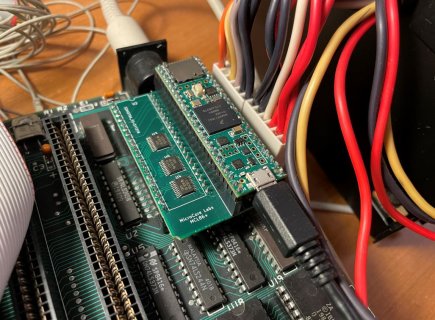MicroCoreLabs
Member
I wanted to share my latest project, the MCL86+, which is a drop-in 8088 replacement board for the IBM PC/XT and clones. It can run in cycle-accurate as well as accelerated modes.
It uses a Teensy 4.1 to run the 8088 emulation and a small and inexpensive PCB to perform the voltage shifting.
Early testing shows that it can boot multiple versions of DOS, run various applications and games, and pass a number of tests including the SuperSoft Diagnostic ROM.
More info on my Wordpress Blog: https://microcorelabs.wordpress.com
And all of the project files are on GitHub: https://github.com/MicroCoreLabs/Projects/tree/master/MCL86%2B

It uses a Teensy 4.1 to run the 8088 emulation and a small and inexpensive PCB to perform the voltage shifting.
Early testing shows that it can boot multiple versions of DOS, run various applications and games, and pass a number of tests including the SuperSoft Diagnostic ROM.
More info on my Wordpress Blog: https://microcorelabs.wordpress.com
And all of the project files are on GitHub: https://github.com/MicroCoreLabs/Projects/tree/master/MCL86%2B


